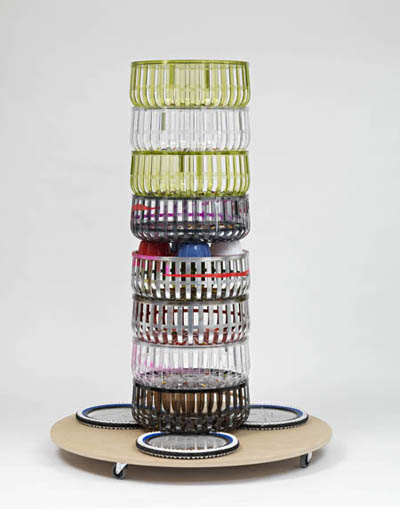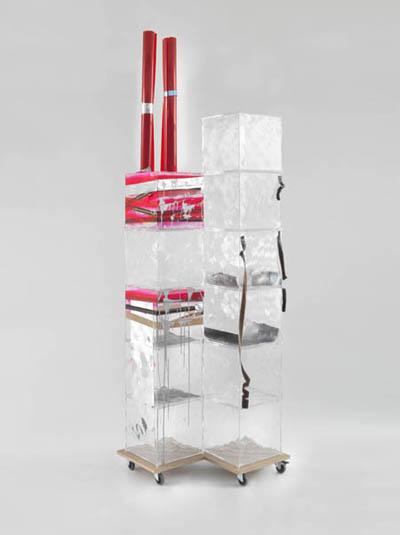| The atomic weight or vibration is the only difference between a chunk of lead and a piece of gold. Your personal and foremost vision, your mental pictures which you color with your emotion, creates the matrix, that something within you from which all things in your life originate. You will always receive the exact equivalent of the vibrational pattern you've created and sent out into the ethers of atomic structure.
"Imagination, vividly colored with emotion, creates your reality." Antoine de Saint-Exupery stated, "A rock pile ceases to be a rock pile the moment a single man contemplates it, bearing within him the image of a cathedral." Or conversely, according to poet Hannah More, "Imagination frames events unknown, in wild, fantastic shapes of hideous ruin, and what it fears, creates." Yes! And what it fears, creates - even if it be a secret fear.
"Your imagination is the mirror in which you see yourself as you choose to be." It is here in this reflection that you see romance, health, and vigor, your perfect location and abode, the car you drive, the jewels you wear, the treasures in your vault and the happiness you feel as a result of such accomplishment - an accomplishment only possible by using the one thing that you have absolute control over - your imagination. You can lose your health, the love of your life, your riches, and even your reputation, but you cannot ever lose the power to recreate an even better reality - you can never lose your imagination, the brush of creation with which you paint your life. It's the frequency, the intensity, and the duration with which you hold your vision that's the secret to its power. If you feel good contemplating your desire, not at all concerned about how or when it will manifest, but you're like a little child knowing your birthday is fast arriving and your skin is electric - that desire is quickly gathering its atomic structure together. Not a force in the universe can stop, delay, or stall your vision's manifestation.
"I'm a horse lover (at one time owning a very impressive thoroughbred)." Contemplating a stakes winner coming into my life, I bought Doug Prather's impressive coffee table book, Private Access - Behind the Gates of America's Premier Horse Farms and Ranches. Flipping through its pages, I read about an elite 3,000 acre horse farm in Lexington, Kentucky - it's called Airdrie Stud. Brereton Jones grew up on a dairy farm the next county over from where I had a 100 acre hill farm. Brereton had managed to save enough money to buy a 40 acre farm in Mason County, West Virginia after he got out of school. He began raising thoroughbreds. But his imagination was taking him to the bluegrass country of Kentucky. It's the mecca of the finest and most expensive horses in the entire world. Amazingly, in 1972 he and his wife, Libby, were starting from scratch by building a four-stall stallion barn. Soon, adding acre to acre, the small enterprise became 3,000 acres, with 65 full time employees and 200 broodmares with high stakes winners bringing in untold millions as world champions. As a side note, this West Virginia farm boy who saw himself in his vivid imagination raising race horses in Kentucky also became the state's governor from 1991 to 1995. That's what I call "galloping imagination." "Another of my favorite farms is Winstar, also a premier bluegrass estate." Talk about a galloping imagination: here we have a couple of friends who met in Nebraska 30-some years ago, Kenny Troutt and Bill Casner. Let me tell you about Bill: growing up in El Paso, Texas, he dreamed about horses. Horses were continually galloping in his imagination. So much so, that he'd do anything just to be around them. During his summer breaks from school at Tarleton State University in Chicago, he lived in a tack room. He worked odd jobs around the track as a security guard, grandstand cleaner, and parking lot attendant, then got a sales job with Snap-on Tools. He and Kenny became very astute businessmen and, selling their other ventures, bought 450 acres in the Bluegrass. Today, Winstar sprawls over 1,500 acres with ten barns. That's what I call "galloping imagination!" "Troutt and Casner bought among other top thoroughbreds, a mare, Belle's Good Cide." She had been sent to New York to be foaled. The chestnut colt was then bought by five high school friends from Long Island - five friends who couldn't shake off the picture in their imagination of owning a winning race horse. That horse, Funny Cide, who I'd bet thousands upon, just happened to be the 2003 winner of the Kentucky Derby and the Preakness Stakes! Galloping imagination? 100 people sat in my living room as I recounted this story of the power of an unrelenting imagination. I said, "I just really love Funny Cide." A woman named Carol raised her hand. "Peter, that's funny - I've just been hired to work with Funny Cide at Saratoga!!!" Go figure! That's galloping imagination winning by more than a nose. And wait until you hear the rest of the story. That's the view from the mountain today. Love and Success! |

.jpg)

























